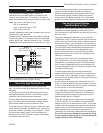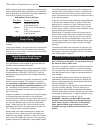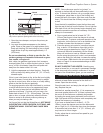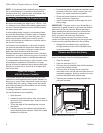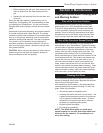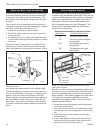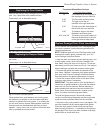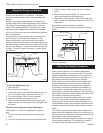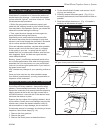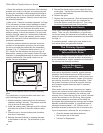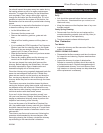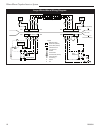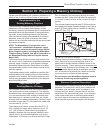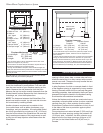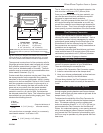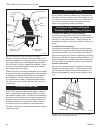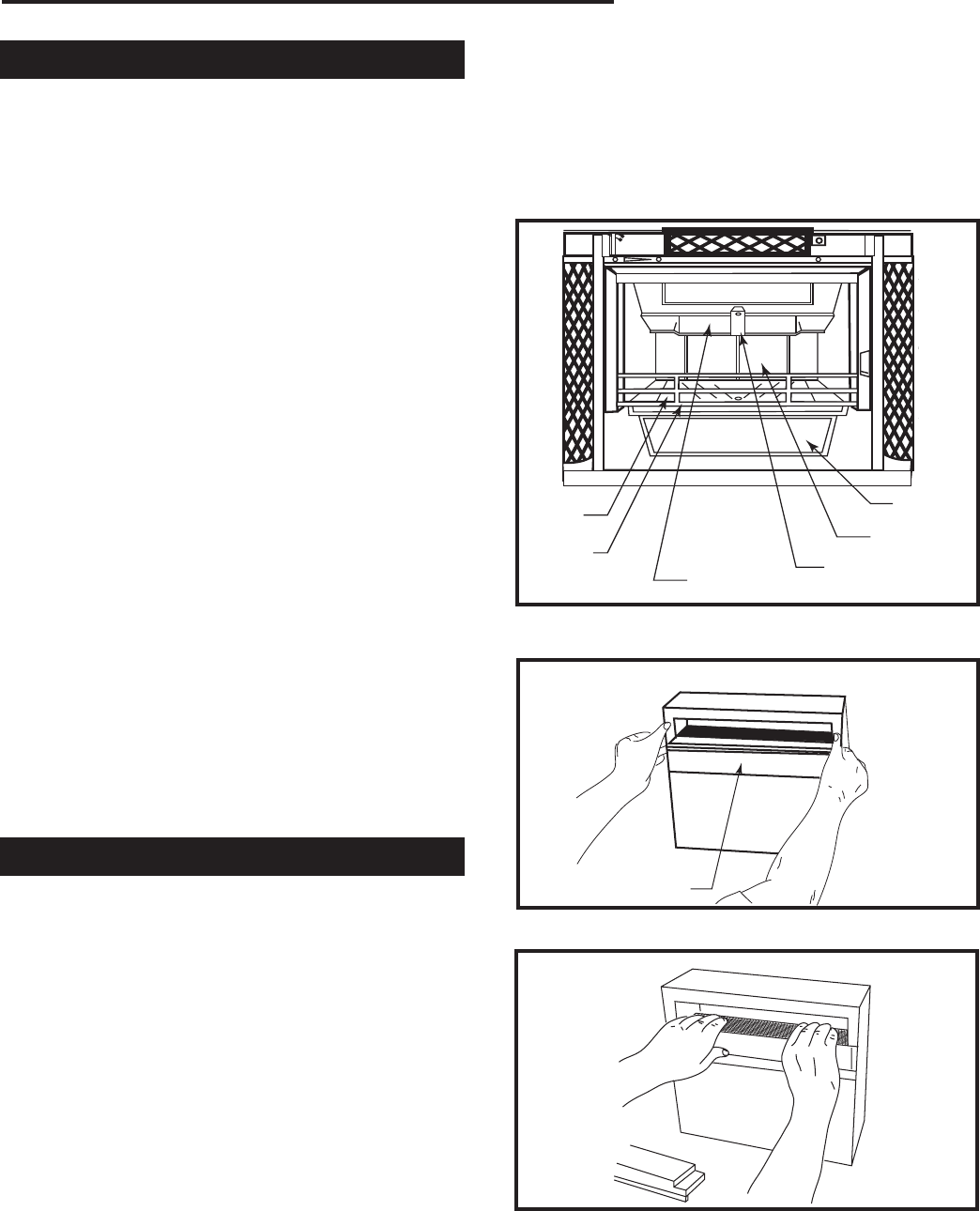
13
WinterWarm Fireplace Insert or System
2000941
When to Suspect a Combustor Problem
The best way to evaluate the performance of your
WinterWarm’s combustor is to observe the amount of
smoke leaving the chimney — both when the combus-
tor has achieved “light-off” and when it has not. Follow
this simple two-step procedure:
• With a fire going and the combustor properly acti-
vated with the damper closed to route smoke through
it as described in the Operation Section, go outside and
observe the smoke leaving the chimney.
• Then, open the stove damper and once again ob-
serve the smoke leaving the chimney.
Significantly more smoke should be observed after
the second step when the stove damper is open and
exhaust is not routed through the combustor. Be careful
not to confuse smoke with steam from wet wood.
If this test indicates a problem, consider other possible
factors as well, such as the time of year or a change
in the quality of your fuel. In spring and fall, draft is
weaker than it is in colder winter weather, and fires can
burn sluggishly. Small, hot fires are a good solution
under these conditions.
Burning “green” (insufficiently seasoned) wood will re-
sult in poorer performance than when burning properly
seasoned fuel. You may have to run your stove hotter
(more air) to achieve good performance if you are burn-
ing green or wet wood.
Also, consider any changes in your operating routine as
well.
Once you have ruled out any other possible causes
for a decline in performance, you may proceed with an
inspection of the combustor.
Inspection and Removal of the Combustor
Before you begin, observe the basic safety precautions
for working with dusty materials: always wear safety
glasses, a recommended dust mask, and gloves. To
expose the combustor, first remove the throat pieces by
tapping upward at the far left and right corners with a
soft-faced hammer. Leave the bolt in the retainer loose,
and leave the retainer in place.
Examine the top surface of the catalytic element, which
will be visible. A small mirror and flashlight may provide
a better view. Unless the element shows a heavy fly
ash accumulation or major damage, do not remove it.
If combustor removal is necessary for cleaning or closer
inspection, follow these steps (Fig. 14):
1. Remove the front grate bar.
2. Remove the grate.
3. Remove the throat pieces as described above
FP1079
Winter Warm
combustor
3/28/01 djt
Grate
Front
Grate Bar
Throat Pieces
Lower
Fireback
Ash Door
FP1079
Fig. 14 To reach the catalytic combustor, remove front grate
bar, grate, throat pieces and lower fireback.
Retainer
4. Tip the lower fireback forward, and remove it by lift-
ing it up and toward you.
5. Carefully remove the access panel. (Fig. 15) It is
extremely delicate and should be handled as little as
possible.
6. Slide the catalytic element out. (Fig. 16) Handle it
carefully, as the element is fragile.
FP1082
WinterWarm
remove access panel
3/01
Access Panel
FP1082
Fig. 15 Remove the access panel.
FP1083
WinerWarm
remove catalyst
3/01
FP1083
Fig. 16 Removing the catalytic element.



